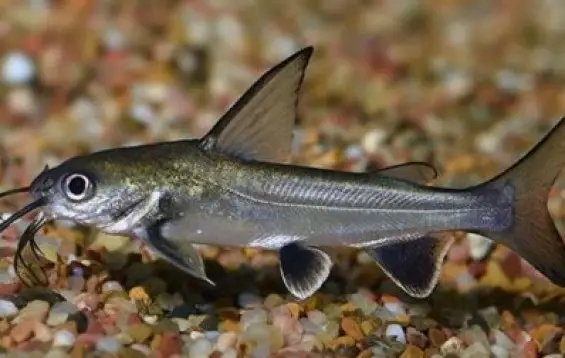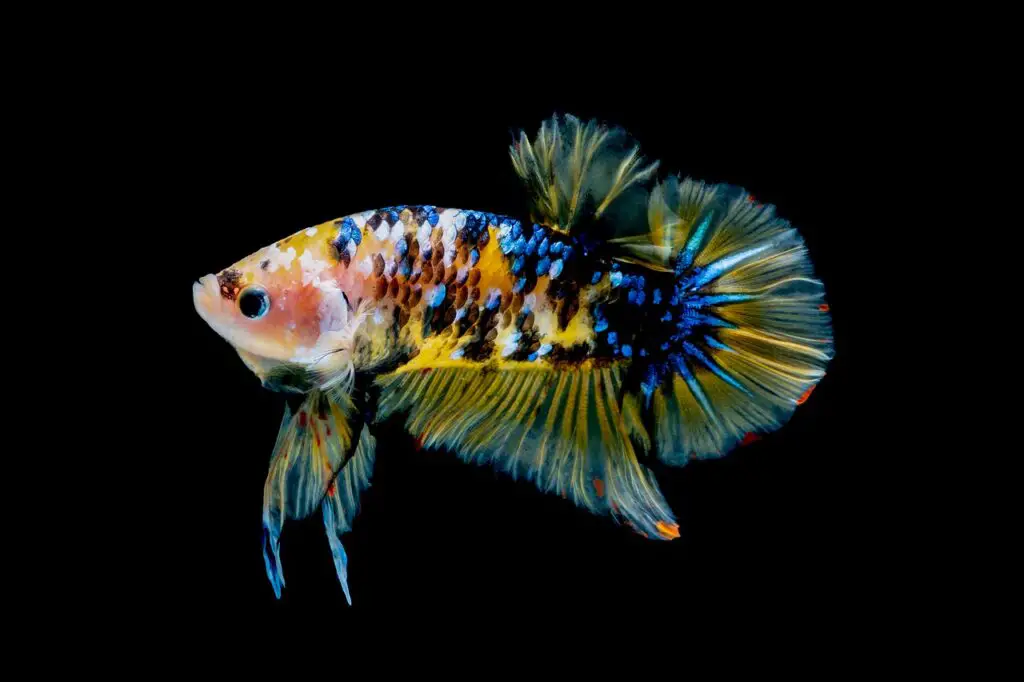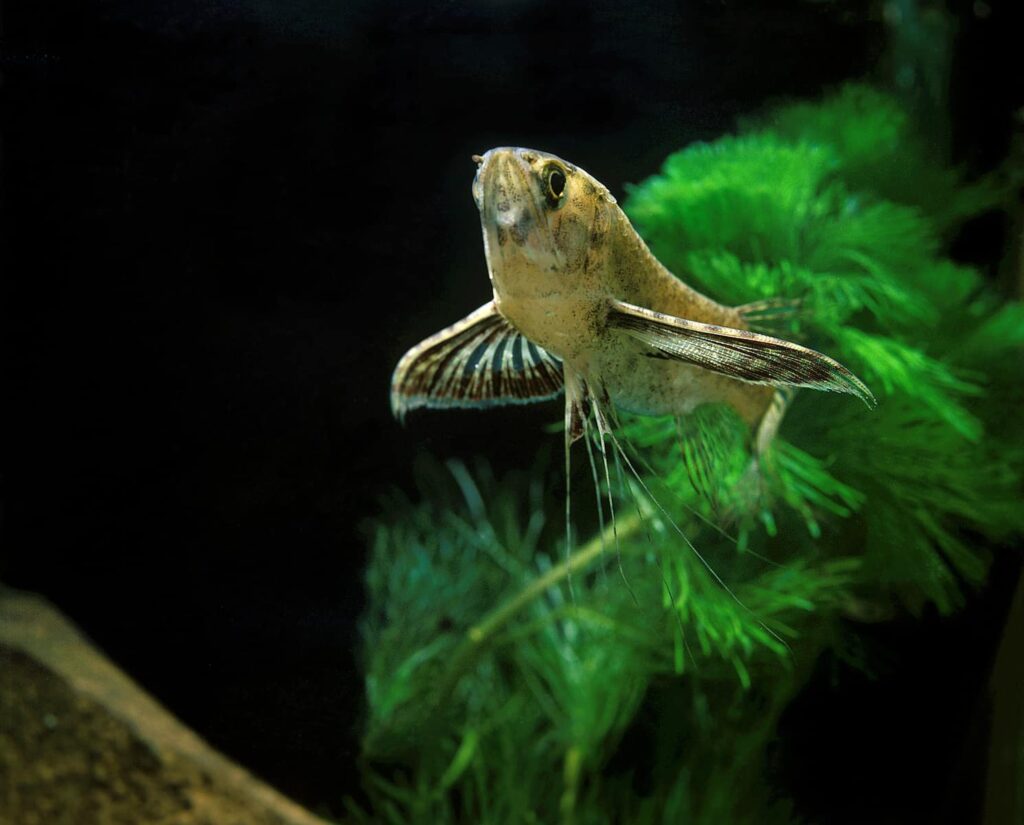Colombian Shark Catfish
These attractive fish are fascinating to watch! They have a distinct appearance with nice subtle colouring from various shades of grey to bronze. Hailing from the brackish waters of South America – Peru to be exact – they are also to be found off the coast of Mexico.
These appealing Catfish can even swim up into freshwater, making them some of the most adaptable in their species. There are plenty of fish that can transition from fresh to brackish waters, and this particular Catfish might just be worth looking out for.
- Fish Lifespan: Up to 15 Years
- Tank Size: At Least 70 Gallons
- Water Temperature: Between 74F and 79F
- pH: Between 7.0 and 7.5
- Hardness: Between 10 and 12 dKH
- Compatibility: Compatible with Most Peaceful Fish
- Fish Size: Up to 10 Inches
How do you take care of a Colombian Shark Catfish?
The Colombian Shark Catfish is a striking, appealing creature which is, on the whole, fairly easy to look after. That is, providing you have some experience with brackish conditions. These are fish that you can’t just cast into a bowl of water! They grow to impressive sizes, and despite their perhaps robust appearance to other fish, they are gentle giants. On the whole, just to be safe, definitely avoid putting them in a tank with any fish smaller than itself.
But what about keeping the tank nice and healthy for this fish? Apart from ensuring your Colombian Shark Catfish have enough space and the right diet, the water in which they live is of course extremely important.
Introducing them to an aquarium without the brackish characteristics they are accustomed to can cause stress and disease. These fish do swim in rivers but prefer the brackish water of estuaries, and therefore, carefully measured amounts of salt should be added to the water. Guidance about the ratio and amounts will be given by your fish supplier. A good filtration system is also important too.
These fish can succumb to disease such as Ich, Flukes and bacterial infection if the water does not have the correct level of salinity. Responsible and reliable suppliers of fish take great care to ensure fish are healthy when sold but, occasionally, some fish are ill at the time of purchase. It is always advisable to keep an eye on new acquisitions and watch for behavioural problems or unexpected marks on the bodies of your Catfish.
Are Colombian Sharks Aggressive?
No, Colombian Shark Catfish are generally peaceful – though they may eat smaller fish, especially if food is in short supply.
They are renowned for being easy to care for and good for beginners who like their dramatic appearance and energetic activity in the tank. They are imposing to look at, resembling sharks in their movements and exploration of their habitat.
Like all fish, the Colombian Shark will likely give as good as it gets if it feels threatened, so don’t ever be surprised to see this creature fight back if another fish takes a nibble out of it. Otherwise, appearances can be deceiving – you are pretty much adopting a miniature shark for your tank without all of the potential bloodshed!
This is a really cool fish to watch and to keep, meaning that despite its various water needs, this is going to be a brackish addition you’ll be glad you made.
How big do Colombian Shark Catfish grow?
Usually purchased from suppliers at between two to four inches, Colombian Shark Catfish steadily grow to an average of 10 inches in length.
Their dramatic appearances with the classic catfish facial features of ‘whiskers’ by their mouths means they are easy to identify in the aquarium and interesting to watch. Offspring are born after being incubated in the mouths of their fathers as eggs.
Numbers vary, but a dramatic increase in the number of fish sharing a tank may require you to consider purchasing a separate tank or giving away some of the offspring. These little fish can grow relatively quickly!
It is advisable for you to be prepared with a separate tank ready in which to grow the newborns because your fish population could outgrow the size of the tank!
What’s more, it’s easy to assume that a Colombian Shark is not going to grow much bigger than its size at purchase! This is a fish that can, and probably will, double in length by the time it is fully mature.
Trust us when we say that the golden rule across all fish keeping is to look for as big a tank as you can. The bigger the better, as you will never know when you might need the volume. These Catfish can grow very large, meaning you will be grateful for the extra space in the long run.
What do Colombian Catfish eat?
As omnivores, Colombian Catfish happily eat meat and plant material. Ideally, a varied diet in dried or pellet form is good practice.
Ideally, food pellets which sink provide opportunity for a ‘chase’ – and settling means they can focus, once stationary, on eating peacefully. They love the thrill of the hunt!
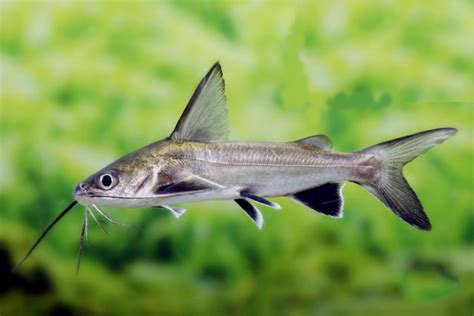
Great news for fish keepers everywhere – the Colombian Shark Catfish will proudly eat up your algae, making it a great cleaner fish. They will also love to chow down on bloodworms, too. This means they generally like a mix of things.
However, the Colombian Shark Catfish is also known to eat smaller fish, especially if food is too sparsely given. At feeding time, it is a good idea to sprinkle the food over an extensive area so that all the fish can get to some.
In fish communities, there are sometimes greedy fish who ‘capture’ more than their share, so owners should carefully observe the behaviour of the fish in the aquarium at feeding time.
What size of tank do Colombian Sharks need?
A 70 gallon tank minimum, depending on the number of fish, is ideal for Colombian Sharks. However, you’re going to need to be fairly creative if you want to breed these fish, as you’re going to need a fair amount of space, fairly quickly.
After the female Colombian Catfish lays eggs, the males take them into their mouths to incubate them. Once the offspring are swimming independently, it’s a good idea to lift them out of the tank to spend adolescence in a separate tank, otherwise they can become dinner for their parents!
Also, the tank will soon become too small for the fish family if you don’t remove them. It is worth keeping in mind that gradually adding a little salt to your tank could help with the condition of the water and make your Colombians feel more at home, too.
Therefore, 70 gallons tends to be the absolute outside lowest amount we’d suggest for these fish. As they will happily propagate, and as they will grow to a fair size, never overestimate. Make sure you invest in as large a tank as you can handle, as this will mean you can comfortably welcome these fish for time to come.
Are Colombian Shark Catfish related to sharks?
No – these Catfish are not related to sharks, but they do move in a similar way in the water. They have similarities to some sharks but are also akin to Dolphins, sharing some characteristics for retrieving food!
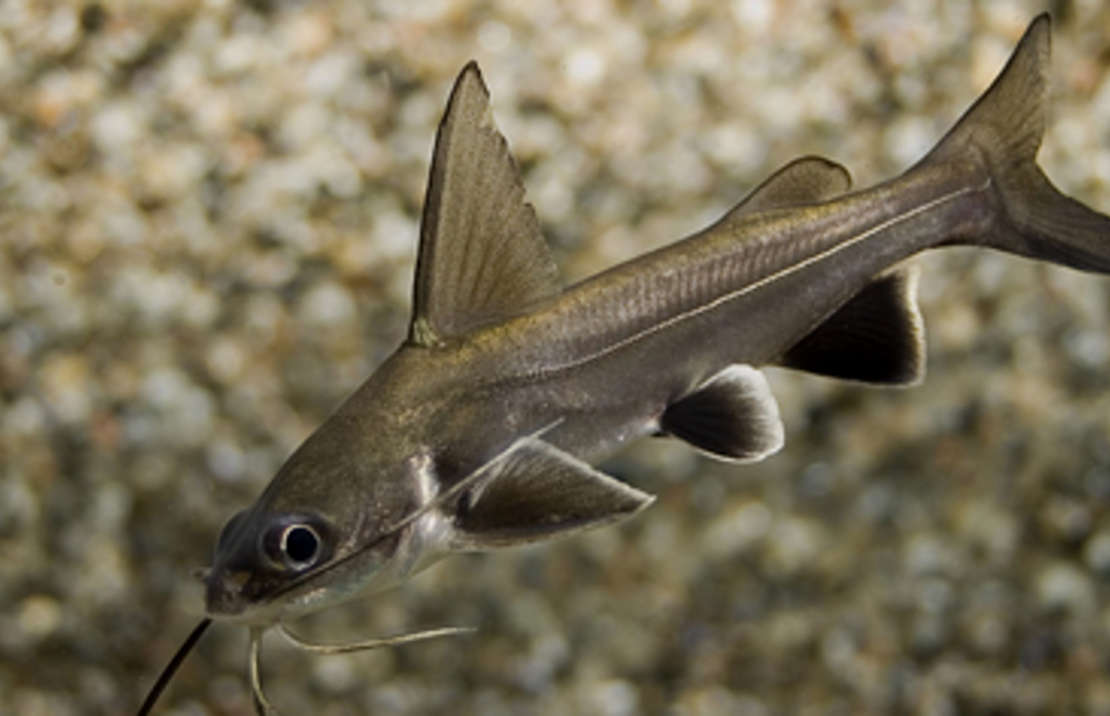
They produce ‘click clacking’ sounds like dolphins, particularly when it seems stressed or otherwise stimulated. They have a fair amount of sensitivity to chemicals in their habitat and also respond to fields of electricity. They can source food using these skills and are known to locate food covered by sand.
They seldom eat food at the surface, most usually dining at low levels on rocks, the sea or bed of the aquarium and off rocks and plants. Colombian Shark Catfish are skilled navigators and use their whiskers to find their way around. Therefore, while they do share plenty of traits with their namesake, they are pretty unique in their own special ways, too!
Should I get a Colombian Shark Catfish?
A Colombian Shark Catfish is a fantastic addition to your brackish aquarium. We highly recommend these creatures for absolute beginners, meaning if you are really stuck on where to start with your brackish adventure, make a point of considering these beasts as a priority.
These fish can look fearsome, and yes – they certainly swim around much in the same way as a shark does – but they are completely harmless providing they are living in an environment with fish of the same size. Otherwise, your Catfish is going to take more than a nibble or two out of a passing Guppy or otherwise. Make a point of housing these Catfish on their own if you are going to breed them, otherwise, you likely won’t have any problems in a tank full of larger fish.
There are, of course, other Catfish that you can adopt and bring into your brackish tank, too! Why not take a look at our full guide to the 14 coolest fish for brackish tanks?

